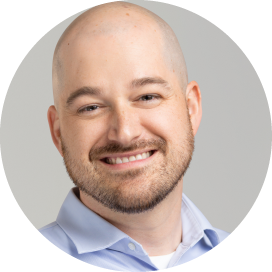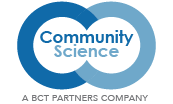In this webinar, we explore how to tackle pressing community development challenges like gentrification, displacement, and housing shortages with a fresh, adaptive approach. Learn how to move beyond static metrics and one-size-fits-all solutions to create strategies that are:
- Proactive: Anticipate and plan for change instead of reacting to it.
- Equity-Driven: Center local expertise to ensure solutions reflect your community’s unique needs.
- Actionable: Focus on data that drives meaningful outcomes and real progress.
Discover a proven four-step process for equitable community development, including how to ground your data in local contexts, prioritize strategies within your control, and keep your efforts adaptable in an ever-changing landscape.
This webinar is perfect for government officials, nonprofit leaders, foundation program officers, and anyone invested in creating stronger, more equitable communities.
Here is the processed text with sequence numbers and time marks removed:
—
Michael Shields: Hello, everyone.
Michael Shields: Alright, so welcome again to community sciences’ webinar, entitled “Moving the Needle: Making Your Community Development Data Work for You.”
Michael Shields: My name is Michael Shields, and I’m going to be facilitating today’s webinar and taking you through a process that we use in our equitable community development practice area for doing data analyses and assessments for community economic development projects. We have found this approach allows us to be more grounded, forward-thinking, inclusive, and to build out more concrete insights and actionable strategies with our partners.
Michael Shields: So I’m going to walk you through that process today. Again, for those just joining, if you have any questions that pop up during the webinar, feel free to throw them into the Q&A feature of Zoom, and we will collect and go over them at the end.
Michael Shields: Today’s takeaways: I’m hoping you walk away recognizing the impact of local context and expertise in both data analysis and assessments in community economic development. Adding and accounting for local context can be incredibly powerful. Additionally, consulting with the community and leveraging community expertise is critical.
Michael Shields: You’ll also learn about our four-step process for doing data-driven analyses and assessments for economic and community development. I’m hoping you’ll learn all about it. While I don’t expect you to follow it step by step in your own analyses, I hope you’ll walk away identifying ways to make your analytical work more grounded, inclusive, and feasible by adopting some of our best practices.
Michael Shields: Before diving in, I want to provide a quick overview of community science and the equitable community development practice area. Community science is a research consulting firm offering a variety of services, including research, strategy development, capacity building, and evaluation. Our staff has subject matter expertise in areas like health equity, organizational effectiveness, and education.
Michael Shields: Within our equitable community development practice area, we promote opportunity and systems change for individuals living in place or seeking economic security. Our focus is on systemic inequities historically and currently extracting wealth and opportunity from marginalized groups due to demographic characteristics, socioeconomic status, and geographic location.
Michael Shields: One key point we can all agree on regarding economic and community development is that change is the only constant. To highlight that, I’ve pulled a few headlines that showcase ongoing changes across the economic and community development spheres.
Michael Shields: These changes, however, manifest differently due to local context. I’ve identified three main ways these macro-level changes materialize: the built environment, demographic shifts, and political/legal changes.
Michael Shields: For instance, one community might respond to a housing demand by building extensively, while another might prioritize preserving its existing character. Extreme weather events may also reshape landscapes, while changing common spaces and activities reflect evolving community interactions.
Michael Shields: In terms of demographics, new residents might arrive, or communities may see outmigration or aging in place. Politically, new policies, leaders, or community movements may arise, shaping local outcomes. Local context always filters macro changes, determining their manifestation on the ground.
Michael Shields: Let me illustrate with examples. Here’s a Boston neighborhood in 2007, transformed by housing demand and economic growth by today. In Georgia, a suburban area saw parcels subdivided to accommodate more families. In New Mexico, a ranch became a solar farm due to renewable energy demand. Even small towns like St. Paul, Nebraska, reflect change, updating infrastructure like streetlights.
Michael Shields: Despite constant change, we can measure and strategize around these shifts using various data resources like the Census Bureau, Bureau of Labor Statistics, and state/local open data portals. However, ungrounded analysis often leads to uninformed insights and reactive strategies.
Michael Shields: At Community Science, we often hear, “We tried this solution, but it didn’t work.” When we ask, “How did you engage the community or test it?” the answer is often, “We didn’t.” Grounding data in local expertise and context is crucial.
Michael Shields: In conducting data-driven analyses and assessments, challenges often arise, including measurement challenges like accessing localized data or understanding the scale of change. Strategy challenges include unclear starting points, engaging the community, or recognizing interconnected issues.
Michael Shields: To address these challenges, we developed a four-step cyclical process: start with the stories and goals, calculate the trends, ground truth with experts, and prioritize what can be done. I’ll walk you through each step using an example engagement.
Michael Shields: Starting with the stories, the story can often be found in the initial reason for engagement. Why do you want to find data? What’s the underlying research question? Often, we hear broad goals like “We need more housing” or “We need more jobs.” But as we probe, we uncover more specific underlying stories or goals.
Michael Shields: This involves consulting local contacts, reviewing community boards or periodicals, and comparing similar places. It’s also crucial to ask questions like “What do you want your place to look like in 1, 5, or 10 years?” and “What assets make your community unique?”
Michael Shields: Let me illustrate with a case study, which I’ll call Small City, U.S.A. Their initial story was “We need more market-rate housing.” But after discussions, they also expressed interest in attracting new residents, employers, and building a stronger tax base. However, the city faced stigma as an area associated with poverty and homelessness. The underlying story was about revitalization, with market-rate housing seen as a silver bullet.
Michael Shields: This shifted our focus to not only assessing market-rate housing but also considering current housing needs and economic development opportunities. From the stories, we moved to step two: calculating the trends.
Michael Shields: Calculating trends involves quantitative analysis, starting with foundational metrics like population characteristics, housing stock, and economic trends. We then identify metrics specific to the story, ensuring relevance and avoiding data overload. Finally, we visualize the trends to provide clear insights.
Michael Shields: For example, in Lansdale, Pennsylvania, we mapped population growth and decline across neighborhoods over 10 years. In Rutland, Vermont, we analyzed median housing sale prices to highlight affordability. In Philadelphia, we explored historic census data to examine racial demographic changes.
Michael Shields: It’s essential to plan metrics carefully to avoid drowning in data. Data verification, cleaning, and visualization take significant time. Regular check-ins with partners help ensure relevance and prevent wasted effort.
Michael Shields: The third step is ground truthing with experts. Expertise comes in many forms, including local government leaders, professionals, and residents directly impacted by the issues. This step allows you to validate quantitative findings, add local context, and uncover trends not apparent in administrative data.
Michael Shields: Returning to Small City, U.S.A., our analysis showed that market-rate housing exceeded most current residents’ financial means. Through discussions with housing professionals, developers, and residents, we learned that the city had successfully implemented affordable housing but faced stigma from neighboring communities. We also discovered that a pandemic-era policy housed much of the state’s homeless population in a local hotel, contributing to the stigma.
Michael Shields: Ground truthing revealed crucial insights not apparent in the data alone, enabling a more nuanced understanding of the situation.
Michael Shields: The final step is prioritizing what can be done. This involves synthesizing findings, identifying key barriers and opportunities, and strategizing solutions. We facilitate conversations with partners to identify actionable levers of change—areas where they have the most control or influence.
Michael Shields: For Small City, U.S.A., we identified their levers of change as resource curation, relationship building, and destigmatizing their brand. We recommended centralizing financial resources for community investors, fostering partnerships with developers, and promoting community pride through regional events and public art.
Michael Shields: This process is cyclical. New questions often arise, leading to further analysis and engagement. However, prioritization ensures focus on the most critical issues. It’s also important to check biases, communicate findings in accessible ways, and compensate community members for their expertise.
Michael Shields: That concludes the process I wanted to share today. I hope this was helpful, and I’m happy to take questions.
Dontarious Cowans: Yes, I’ve collected a few questions and sent them to you. Would you like me to read them out?
Michael Shields: Let me pull them up real quick.
Michael Shields: One question asks about data resources for communities. Our go-to is the American Community Survey. It’s an accessible and comprehensive resource for community-related research questions. The Bureau of Labor Statistics and state/local open data portals are also great options.
Michael Shields: Another question asks where to find data analysts for community projects. Local universities or community-based apprenticeship programs are good starting points. Building internal capacity within communities can also be effective.
Michael Shields: Regarding dashboards, I’m personally not a fan. Dashboards often become outdated quickly. Instead, we revisit and update data based on emerging questions and context.
Michael Shields: Lastly, someone asked about ensuring equity and diversity in nonprofit ecosystems. It’s crucial to engage organizations directly connected to and representative of the communities they serve. Look for groups addressing equity and showing positive outcomes.
Michael Shields: Thank you all for your questions and for participating in today’s webinar. If you’d like to engage with us further, visit communityscience.com. We’re happy to connect. Thank you, everyone!
Your Hosts and Practitioners

Michael “Mike” Shields, Ph.D.
Managing Associate
Community Science
Mike has expertise in social science research and equitable community development. He is passionate about forging impactful partnerships with nonprofit and community organizations, government agencies, private entities, and academic institutions to effect change in their communities. Mike excels at translating complex research topics and products about community development into accessible insights for different audiences, especially those with little technical or specialized knowledge about research or the relevant issue.

